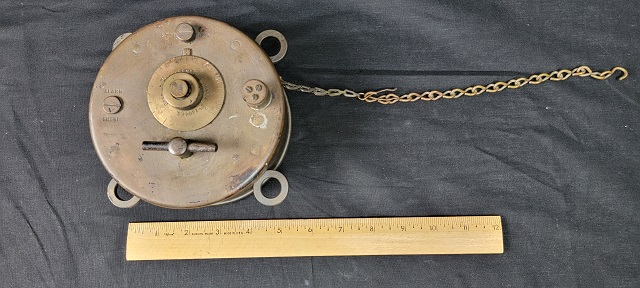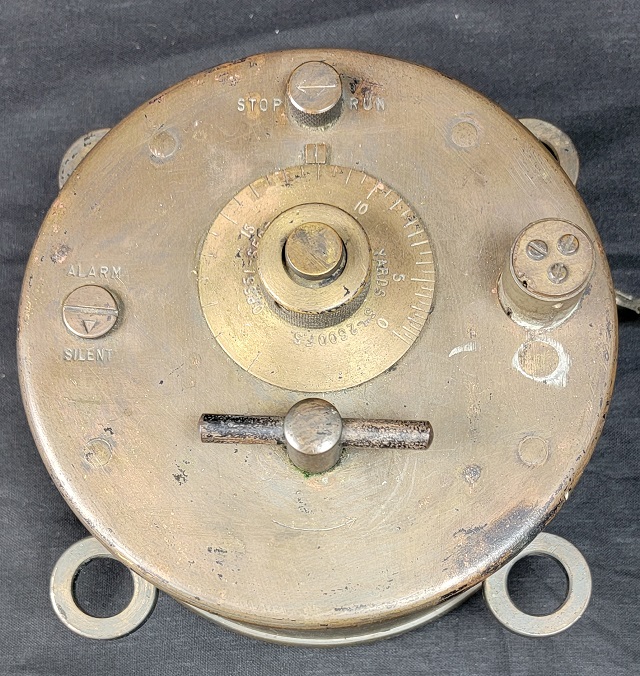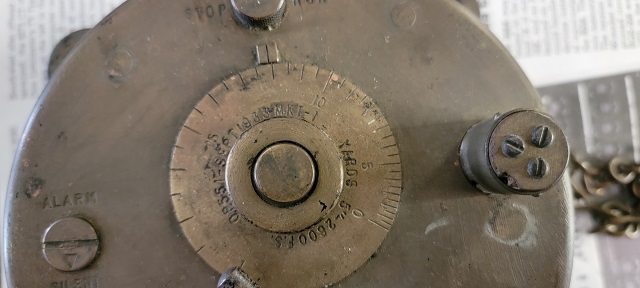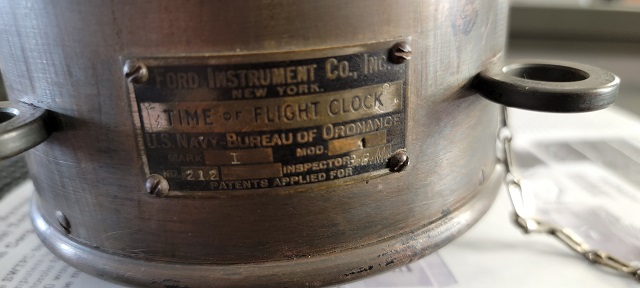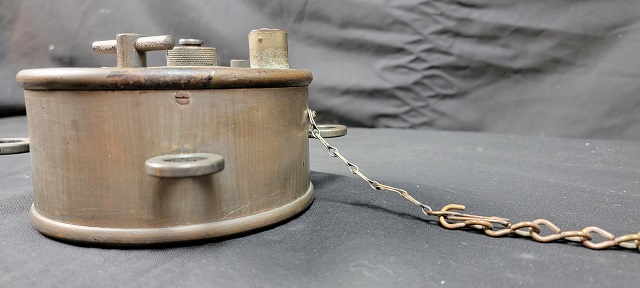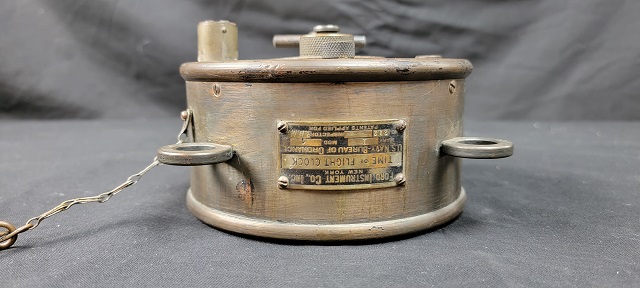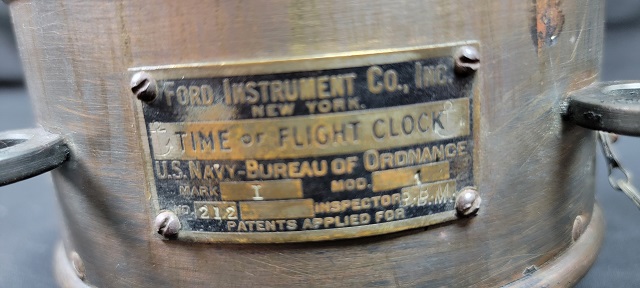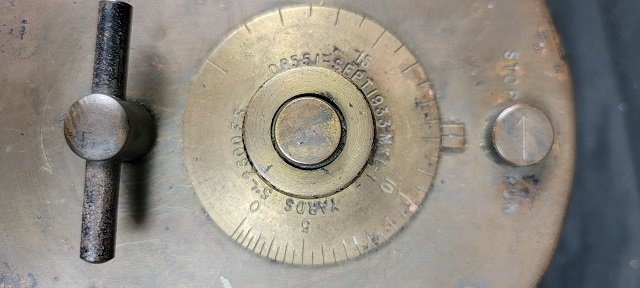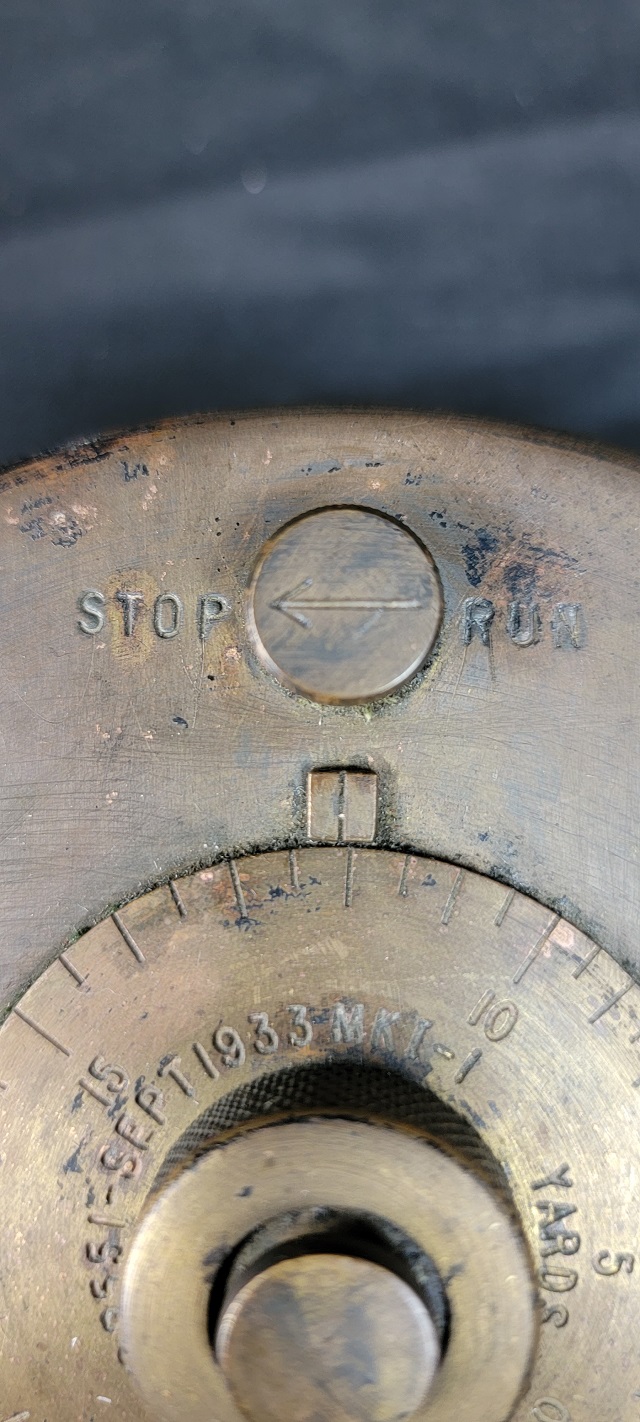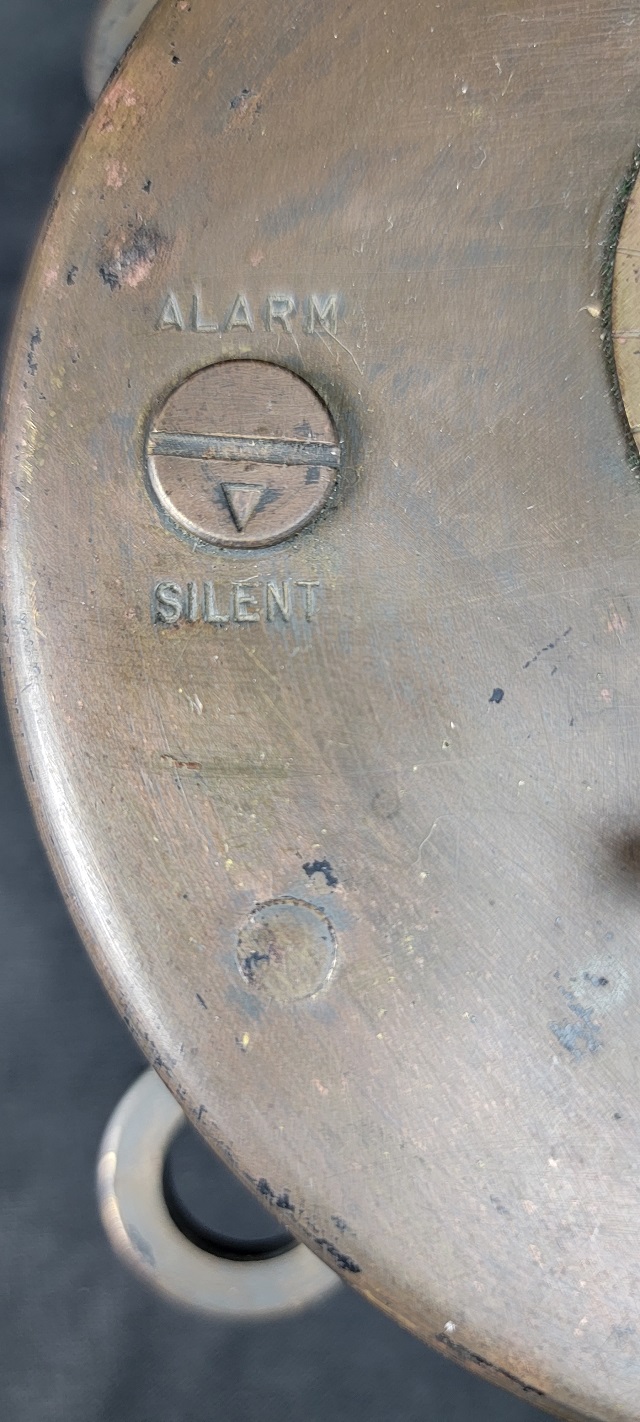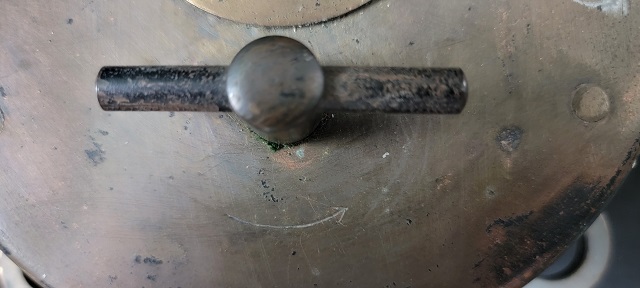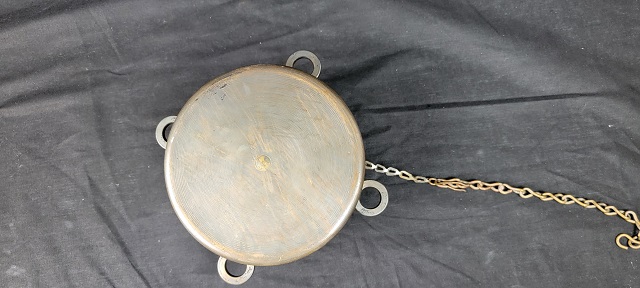The "Time of Flight" clock was a part of the US Navy's first computer (later called a Range Keeper), the Mark I which performed a remarkable number of continuous functions in real time for a computing system in those days. The Mark I Computer was later referred to as the Range Keeper Mark I.
The "Time of Flight" clocks were used in the U.S. Navy in WWI. The clock was started when one of the "big guns" fired on an enemy target and an alarm was sounded about 2 seconds (according to the patent description) before the shell was supposed to hit the enemy target. A gunnery officer would look for the explosion or the splash (if the shell missed...which was roughly 9/10 times) and would adjust the guns accordingly. This clock was part of the Mark 1 computer that was used to aim the ship's guns on enemy targets. The label on the clock is clearly marked Mark I and Model 1 with Serial No. of 212. (The Time of Flight Clock in our collection is a bit earlier than the one in the Smithsonian Museum -- Serial No. 283. The Smithsonian also has an error in their description...saying that the central dial "runs from 0 to 20" when it actually runs from 0 to 18.)
The patent for the "Time of Flight" clock was applied for in 1918 and granted in 19201. We have given it the date of 1917 because it was being tested in 1916 and then installed on battleships (see just below) in 1917. The clock was an integral part of Mark I computer that was tested on the USS Texas in the summer of 1916. According to Mindell's examination of the history of computing, the Mark I computer was installed on the battleships, USS New York, USS Wyoming, USS North Dakota and the USS Pennsylvania in 1917.2
The central dial was used to set the clock. The numbers around the dial stand for the number of yards to the enemy target! Stamped around the dial are the words, "YARDS 5" - 2600 F.S.". The central dial is a measurement of yardage to the enemy target and is set up for 5" guns that are designed to fire with an initial velocity of 2600 feet per second (F.S.). The maximum yardage for these guns was 18,000 yards and you can see that 18 is the max number on the dial.
This particular "Time of Flight" clock looks to have been updated by the US Navy. Originally, this clock would have had two electrical terminals just to the right of the main dial. Those two terminals would have allowed an electrical alarm device to be added to the clock...basically a peripheral device! As the patent application puts it, "If desired, an electrical alarm device may be ultilized which comprises two spring contacts ...which are normally out of engagement." The application goes on to state that the two terminals "are provided with sockets to receive jacks or plugs, which would be connected by wires to any suitable annunciator."1 Those two terminals were replaced with a single electrical input (you can see outline of the now unused second terminal just below it.) So even as early as 1916, Ford was anticipating the use of electricity for his computing devices. Around the central dial, stamped into the metal, is "O.P.551 - SEPT 1933 MKI-1" which suggest the update was made in 1933.
1United States Patent and Trademark Office. Patent# 1,355,829. View Patent
2Mindell, David. "Between Human and Machine: Feedback, Control, and Computing Before Cybernetics." Johns Hopkins University Press, April 30, 2003.
Clymer, Ben A. “The Mechanical Analog Computers of Hannibal Ford and William Newell.” IEEE Annals of the History of Computing, vol. 15, no. 2, 1993, web.mit.edu/STS.035/www/PDFs/Newell.pdf.
https://ieeexplore.ieee.org/abstract/document/207741
|
Copyright © 2024 by Early Computers Project, All Rights Reserved. |

